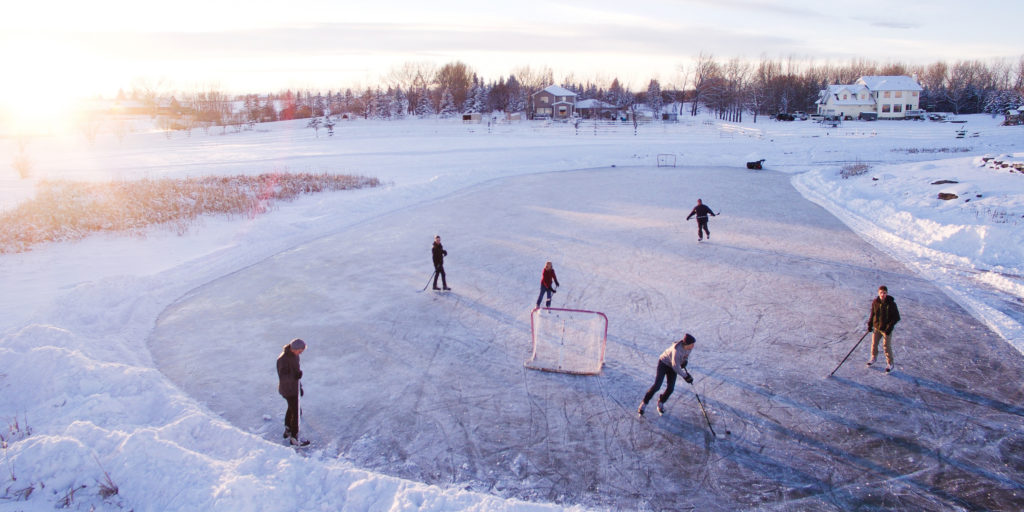Orthotics Can Help Improve Your Winter Fun
When patients come in for a pedorthic assessment, they commonly think that one orthotic will do it all. Today, we are going to explain why you should consider not only custom orthotics for specific shoes but also orthotics for winter sports.

What we tend to forget is that each shoe fits differently, and may be meant for different activities. An orthotic for running won’t fit into a high heel, but what about ski boots and skates?
These, are very different and require the construction of orthotics for winter sports using diverse materials and are often ground into different shapes.
Why Orthotics Should Be Unique To Each Activity
Take downhill skiing for example. When you are skiing your biomechanics are quite different from walking or running. Your body weight shifts forwards and the load on the forefoot increases; we ask our knees to do more work. If we look specifically at edging, which controls direction and speed of ski travel, it begins by everting the ankle and extends by flexing the knees and hips.
Knee position is also important. While technique in edging can be improved with training and guidance, overall alignment of the foot and lower leg determines how easily a skier can edge. Ideal alignment ensues when the tibia, or shin bone, is in line with the rear- and forefoot and is perpendicular to the snow.
This allows a smooth ride for the ski and doesn’t require alteration of body position (Macintyre and Matheson). Placing an overpronated foot in a tight ski boot will flatten the longitudinal arch further and it is challenging for to foot to take on the stable, more neutral position without overloading the intrinsic muscles.
This, again, affects ski technique and can cause foot and knee pain or injury.

Custom Orthotics For Skiing
A custom orthotic specifically made for ski boots uses a full-contact EVA material, which retains heat. It is also strong enough to control excessive movement of the foot without any ridges, where an orthotic would typically end just behind the forefoot.
Because the orthotic is full-contact, it works to block the foot so that there is no compression of the longitudinal arch. It can also limit offset within a boot. Once fitted to your foot, the orthotics are ground and shaped to your ski boots to ensure proper give and fit.

Custom Orthotics For Skating
Now in ice skating, there are two phases to your stride: a support and a swing phase (MacLean).
Support phase involves weight-bearing and can be further reduced into a glide and a push-off state. During glide state, you are essentially balancing on a blade. If you excessively overpronate or underpronate, you can overload the musculature of the leg to maintain balance and stability.
Overpronation, or rearfoot eversion, risks over using the tibialis posterior muscle. Underpronation, or rearfoot inversion, risks over using the peroneal muscle group. Indeed, skaters often complain of DOMS, or delayed onset muscle soreness, in their peroneal muscle group after skating.
Kintec’s lab makes skate orthotic out of a low-profile carbon fiber shell. Often we can post, or tilt, the orthotic outwards to reduce overpronation. This can also address an issue if a skater is balancing on a blade.
Conversely, but far less common, we can post inwards to address underpronation. These changes can improve performance and reduce the likelihood of injury.
READ MORE: The Benefits of Skate Orthotics
The orthotic is covered using a lightly perforated material to promote breathability. It has a durable bottom cover material to protect the orthotic and your foot from rivets. Once we fit the orthotic to your foot, we grind and shape it to fit into your skate. A pull-string is standard on the orthotic for easy removal from the skate. The Canadian Physical Activity Guidelines recommend adults between the ages of 18 – 64 to get 150 minutes of moderate to vigorous physical activity per week.
Ask About Orthotics For Winter Sports Today!
There are many reasons to be curious about improving your performance by introducing orthotics for winter sports. If you have pain with skiing or skating, come to Kintec.
Our pedorthists and fitting experts are happy to discuss custom orthotics for your ski boots or hockey and figure skates.
Kristin Ohm-Pedersen
Kintec Pedorthist
No Comments